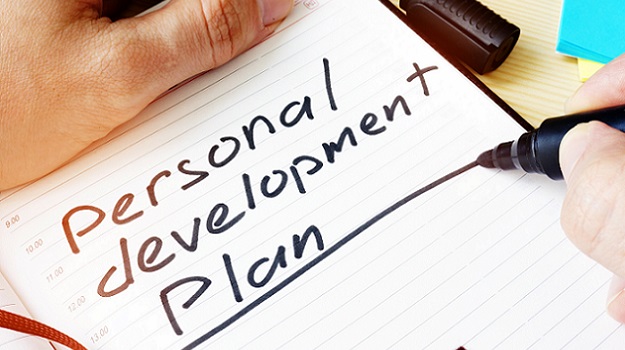A Personal Development Plan (PDP) is a structured roadmap that helps students set goals, track progress, and develop essential skills for academic success and personal growth. A well-crafted PDP empowers students to:
- Take ownership of their learning and future
- Build confidence, resilience, and self-discipline
- Improve academic performance and soft skills
- Develop career and life-readiness skills
By guiding students through goal-setting, reflection, and continuous improvement, PDPs help bridge the gap between aspirations and achievements.
In this guide, we will explore:
- What is a Personal Development Plan (PDP)?
- The key components of an effective PDP.
- Step-by-step guide to creating a student PDP.
- How teachers and parents can support PDPs.
- The role of self-reflection and growth mindset.
What is a Personal Development Plan (PDP)?

A Personal Development Plan (PDP) is a strategic document that outlines:
- A student’s academic, personal, and career goals
- Steps to achieve those goals
- Challenges and solutions
- Self-reflection and progress tracking
📌 Example: A high school student’s PDP may include:
- A goal to improve in mathematics
- Action steps such as practicing daily and seeking tutoring
- Tracking progress through test scores and feedback
Key Components of an Effective PDP
1. Self-Assessment & Strengths Analysis 🔍
Identifying strengths, weaknesses, and areas for improvement.
Understanding personal learning styles, interests, and motivations.
📌 Example: A student may realize they excel in science but struggle with time management.
2. SMART Goal-Setting 🎯
Goals should be Specific, Measurable, Achievable, Relevant, and Time-bound (SMART).
📌 Example:
❌ Weak goal: “Get better at English.”
✅ SMART goal: “Increase my English test score from 70% to 85% in 3 months by practicing vocabulary daily and reading one book per month.”
3. Action Plan & Strategies 🚀
Steps needed to achieve each goal.
Identifying resources and support systems.
📌 Example:
- Action Step 1: Attend math tutoring sessions twice a week.
- Action Step 2: Use a planner to manage study schedules.
- Action Step 3: Complete weekly self-assessment quizzes.
4. Tracking Progress & Reflection 📊
Regularly evaluate progress using journals, charts, or feedback.
Adjust goals and strategies if needed.
📌 Example: A student can maintain a weekly reflection journal to assess learning improvements.
5. Personal Growth & Mindset Development 🌱
Encouraging a growth mindset (belief that abilities can be developed).
Overcoming self-doubt and fear of failure.
📌 Example: Instead of saying, “I’m bad at public speaking,” a student can shift to “I can improve by practicing and getting feedback.”
Step-by-Step Guide to Creating a Student PDP
Step 1: Self-Reflection & Assessment
What are my strengths and challenges?
What subjects, skills, or areas do I want to improve?
What motivates me? What do I struggle with?
📌 Tool: Use a self-assessment worksheet to list personal strengths and areas for growth.
Step 2: Set SMART Goals
Define short-term (1-3 months), medium-term (6-12 months), and long-term (1-5 years) goals.
Break big goals into manageable steps.
📌 Example:
🎯 Short-Term Goal: Improve writing skills by practicing essays weekly.
🎯 Medium-Term Goal: Get an A in English class next semester.
🎯 Long-Term Goal: Publish a blog or article in a school magazine.
Step 3: Develop an Action Plan
Identify specific actions to achieve each goal.
Find resources and support systems (teachers, mentors, online courses).
📌 Example Action Plan for a Student Improving Math Skills:
- Daily: Solve 5 practice problems.
- Weekly: Attend extra help sessions.
- Monthly: Take a practice test and track improvement.
Step 4: Track Progress & Reflect
- Maintain a progress journal or use an app to log improvements.
- Reflect on what’s working and what needs adjustment.
📌 Pro Tip: Use a progress-tracking chart with checkboxes for completing tasks.
Step 5: Adjust & Stay Motivated
- Revisit the PDP every month to make updates.
- Celebrate small wins to stay encouraged.
📌 Example: A student struggling with public speaking can revise their PDP to include more practice opportunities and feedback sessions.
How Teachers & Parents Can Support PDPs
🔹 Teachers:
- Guide students in setting realistic and meaningful goals.
- Provide feedback and encouragement.
- Integrate PDP discussions into mentorship sessions or advisory periods.
📌 Pro Tip: Use goal-setting worksheets in the classroom to introduce PDPs.
🔹 Parents:
✔ Discuss PDPs with children regularly.
✔ Encourage a growth mindset at home.
✔ Provide resources and emotional support.
📌 Pro Tip: Parents can set a “goal-check-in day” once a month to review progress with their child.
The Role of Self-Reflection & Growth Mindset in PDPs
🔹 Why Self-Reflection Matters:
✔ Helps students understand their learning habits.
✔ Encourages ownership of academic and personal growth.
✔ Strengthens problem-solving and adaptability skills.
📌 Reflection Questions for Students:
🔹 What challenges did I face this month?
🔹 What strategies helped me succeed?
🔹 What can I improve in my learning habits?
🔹 Developing a Growth Mindset:
✔ Encourage effort over talent – “Hard work leads to improvement.”
✔ Embrace challenges – “Mistakes help me learn.”
✔ Seek feedback – “Constructive criticism helps me grow.”
📌 Example: Instead of saying, “I failed my test, I’m not good at math,” a growth mindset approach would be “I didn’t do well, but I’ll study differently next time.”
Technology & Tools for Personal Development Planning
📲 Digital Apps & Tools for PDPs
✔ Trello or Notion – Organize tasks and track progress.
✔ Google Docs or OneNote – Maintain a personal reflection journal.
✔ Habit-Tracking Apps (Habitica, Streaks, Momentum) – Keep daily learning habits on track.
✔ Khan Academy, Coursera, or Duolingo – Online learning resources for skill development.
📌 Pro Tip: Students can create vision boards or use goal-setting templates for motivation.
Conclusion: Building a Roadmap for Lifelong Growth
A Personal Development Plan (PDP) is more than just a tool—it’s a roadmap to success, self-discovery, and lifelong knowledge. By setting clear goals, tracking progress, and embracing challenges, students can build the skills, habits, and confidence they need to thrive in academics and beyond.
💬 Have you ever created a Personal Development Plan? What strategies have helped you achieve your goals? Share your thoughts below! 🚀🎯📚



